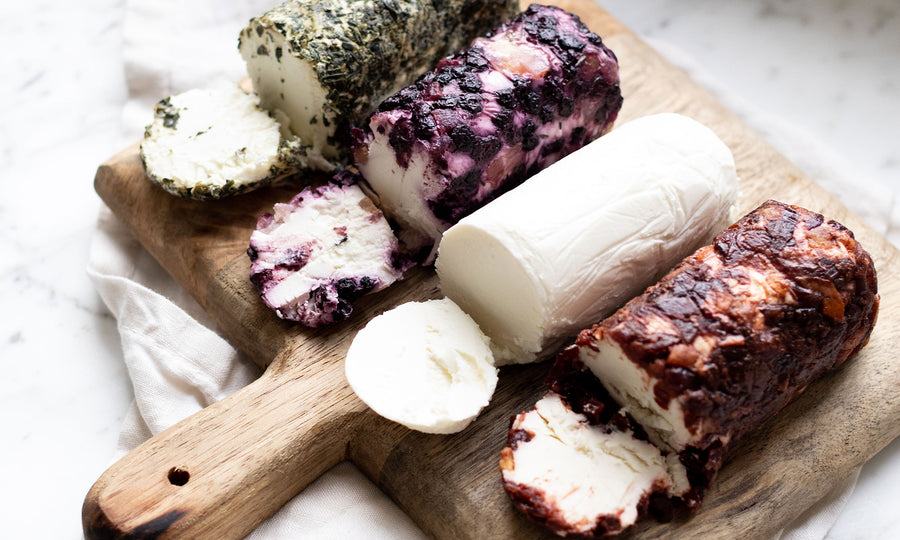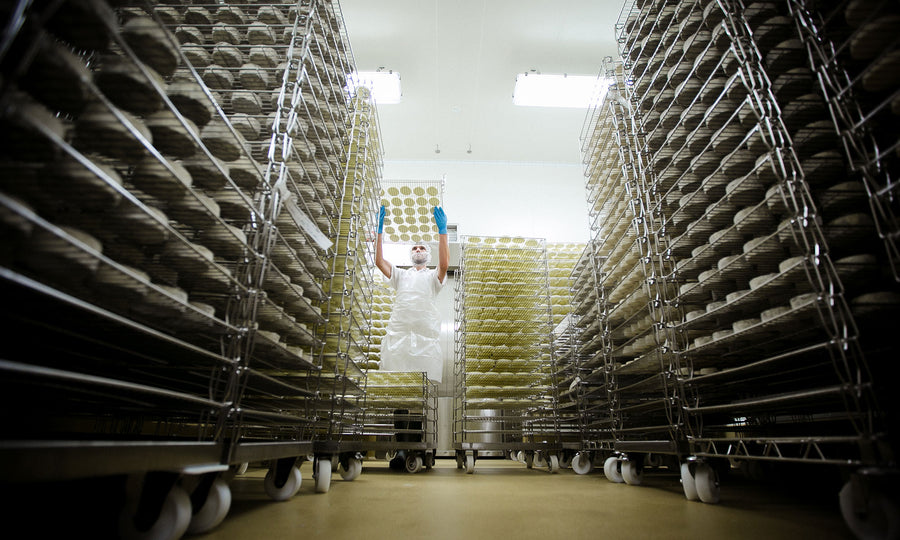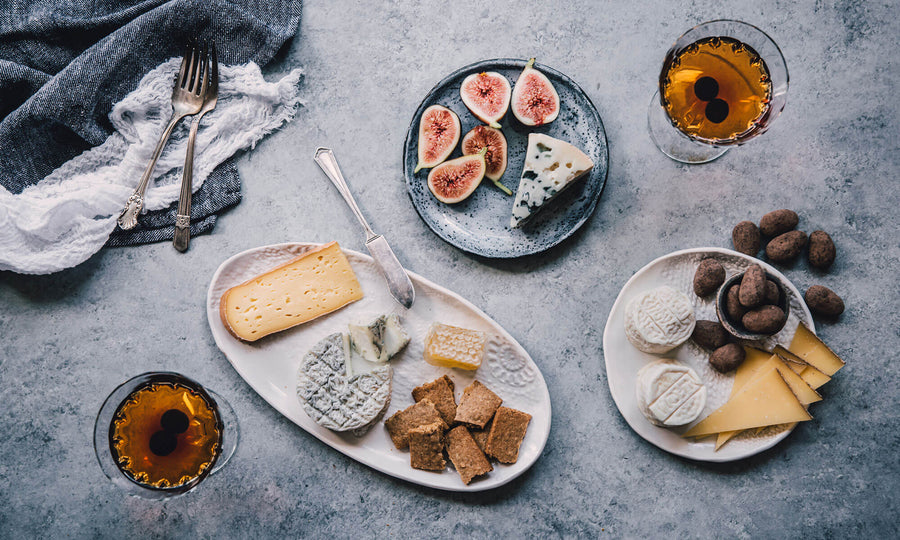Cheese is so many things, all at once. It’ delicious yet odorous; unique yet consistent, it’s science and art, all in one. We are taught from a young age that mold equals expired, yet, where cheese is concerned, the moldier, the better. Why? Because cheese is alive.
But like, how alive?
Cheese isn’t growing arms and legs and walking itself to your fridge, alive. It’s not going to talk to you in some sort of ‘Little Shop of Horrors” nightmare sequence – alive. Cheese is alive in a friendly, approachable, decorative houseplant sort of way.
It needs things, like a temperature-controlled environment and just the right balance of humidity – in order to breathe.
Cheese breathes?!
Ours does! Take our lineup of geotrichum rind soft-ripened aged cheeses: Bonne Bouche, Coupole, Bijou, Cremont, and St. Albans. These delicate handmade aged cheeses won’t soon find themselves anywhere near a vacuum sealer, unless it was attending the funeral of a fellow vacuum-sealed aged cheese.
Our cheeses depend on that O2, just like us.
They need oxygen to breathe and mature, just like any living thing. If you lock these cheeses up in an airtight container or plastic bag, a plethora of mold (and not the tasty kind) will pilfer the rind of the once delicate cheese, until its inedible.
Blame it on the microbes.
So, full disclosure, we add bacterial cultures to our fresh milk on purpose. Each aged cheese has its own unique collection of bacterial cultures that create an ecosystem on the surface of the cheese over time.
All cheese starts as fresh cheese, until we add that blend of yeast and mold and let them age in a gentle fashion, in just the right environmental conditions under the supervision of our affineurs. It is at this point, where aged cheeses earn their terroir.
Terroir?
It means taste of place. The milk and the bacteria come together to make a cheese that tastes like the region it was made in – reflecting everything from the feed of the cow or the goat, to the weather at the time the animal was milked, to the hands that touched them throughout the process.
Fascinating stuff, we know.
So, let the cheese we so painstakingly made for you, breathe. We get it, you love it so much that after the cheese course, you are desperate to preserve what is left of that truly special Bonne Bouche or Coupole. Do not reach for the Ziploc bag, or the Tupperware. Wrap it gently in parchment paper or better yet – the packaging it came in.
Our packaging is special in many ways. Perhaps most importantly is its ability to let the cheese breathe. The post-consumer waste plastic “clamshells” close around the cheese but leave a gap to allow oxygen to flow between the cheese and the outside world. St. Albans, our brilliant little fondue for two, is packaged in a mini crock (perfect for the toaster oven) and then shrink-wrapped in perforated film. Tiny, laser-drilled holes allow oxygen to flow around the cheese, encouraging it to age on its way from our Creamery to your kitchen.
The cheese will continue to age in your refrigerator, thanks to the packaging design. Let’s hear it for science. So, if you’re trying to do right by your Bijou or treat your Bonne Bouche with the respect she deserves, remember, these beauties must breathe, because cheese is alive.




